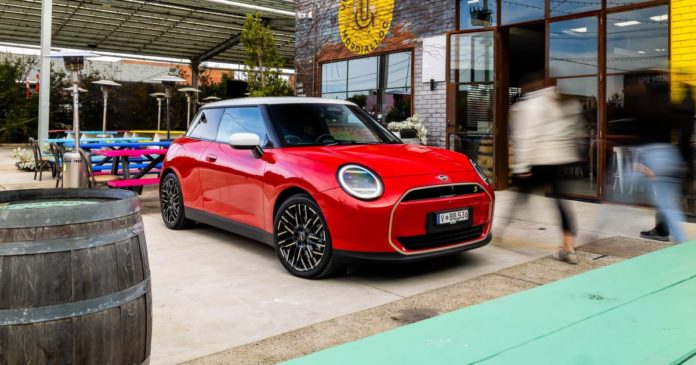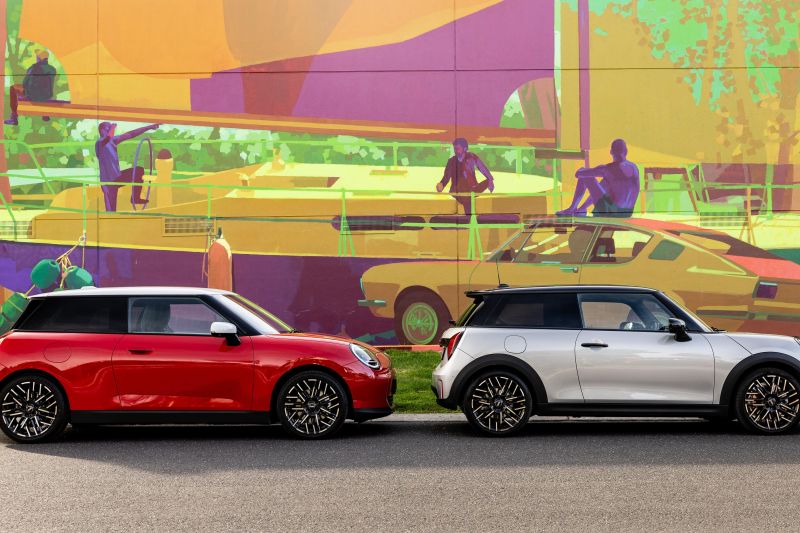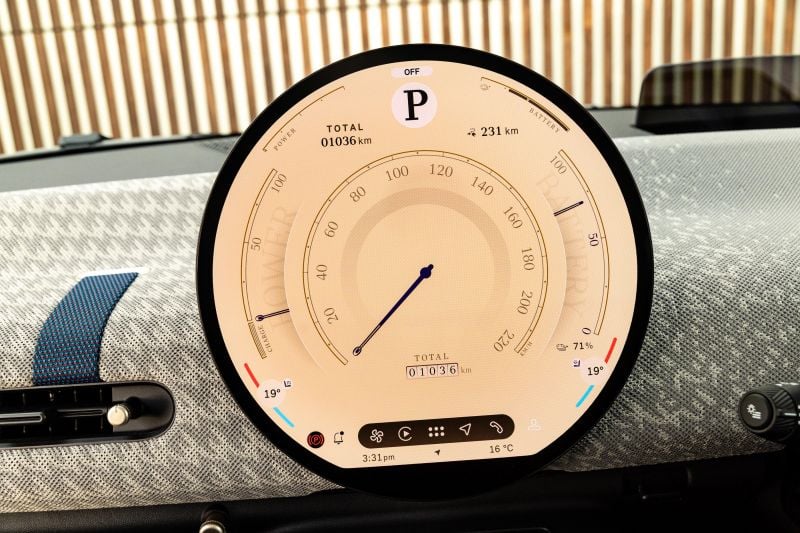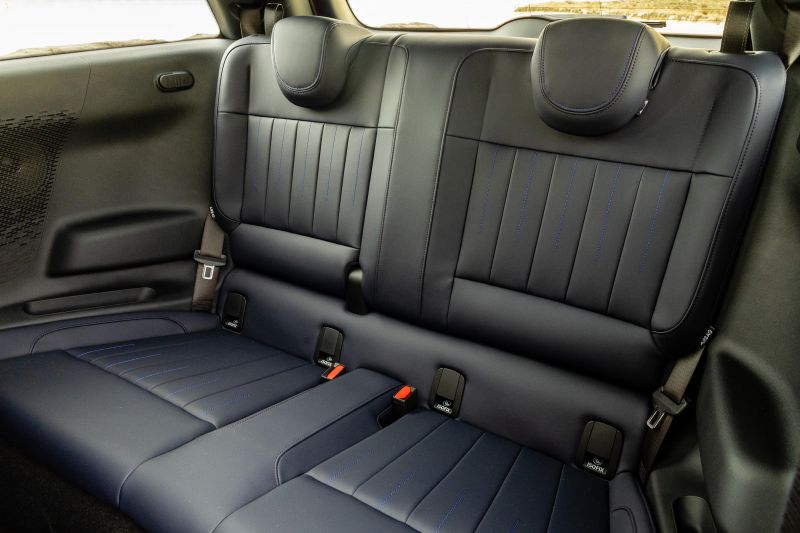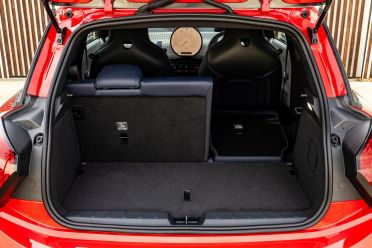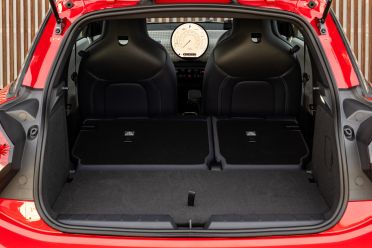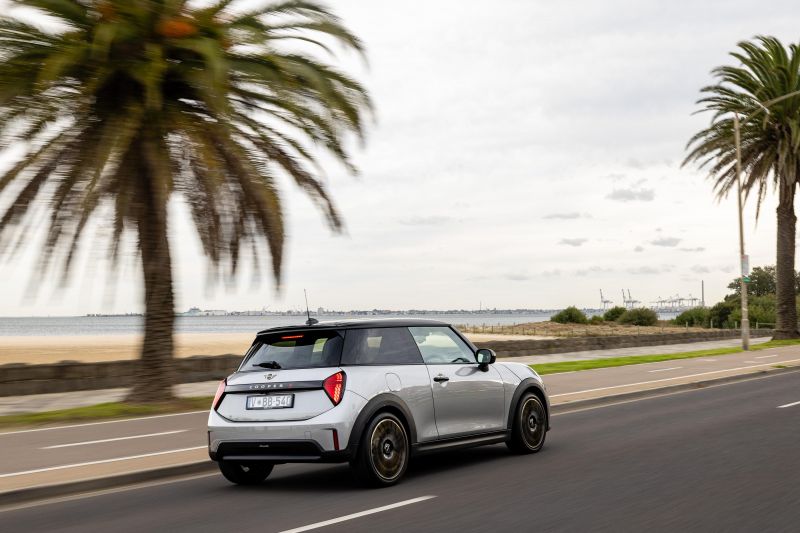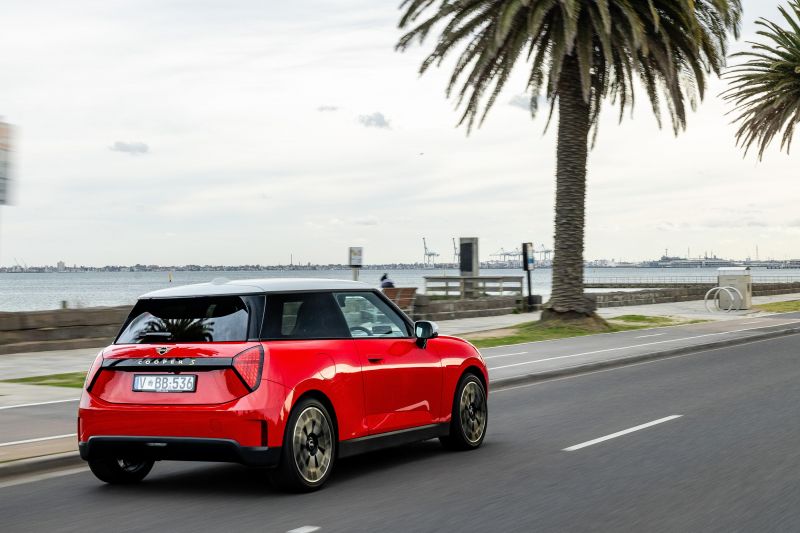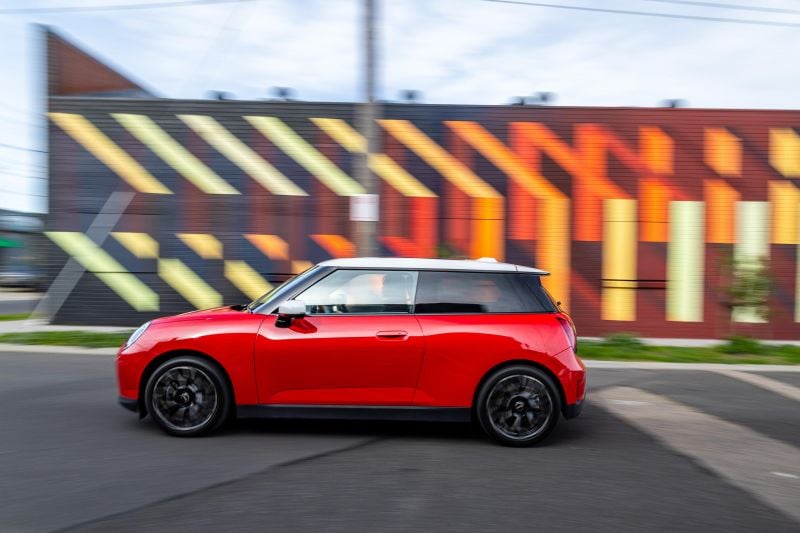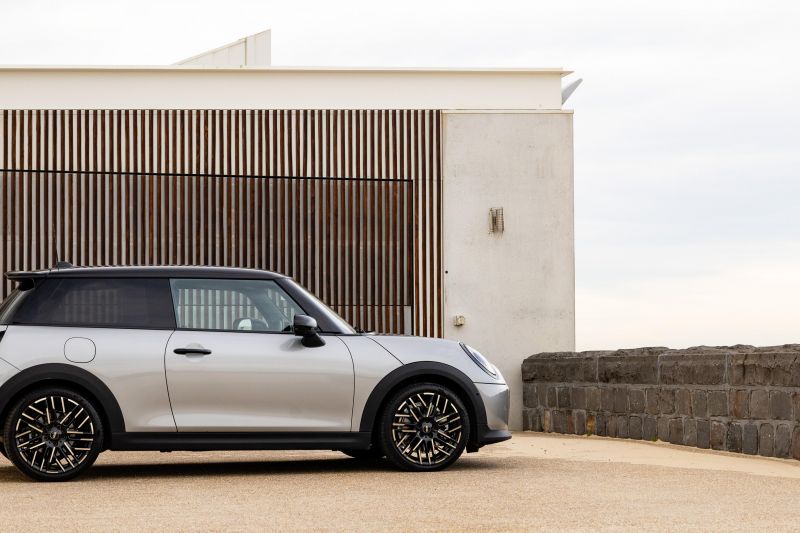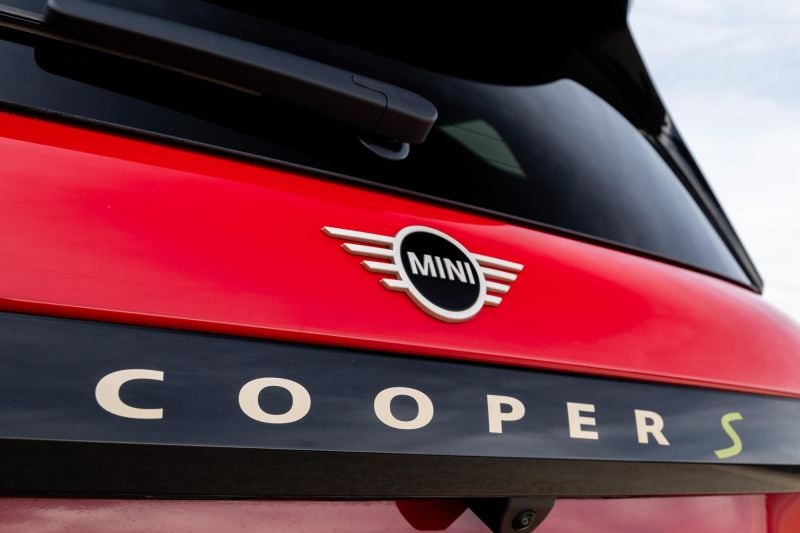There’s a new Mini Cooper in town, but it’s a tale of two cities – or cars in this case.
-
Cooper S
As before there are petrol and electric versions of the retro-styled city hatch, but despite visual similarities they’re actually completely different cars.
The F65-generation 2025 Mini Cooper is the petrol one, based on a heavily revised version of its predecessor’s platform. Much like the larger Countryman, it brings with it major technology advancements.
Meanwhile, the J01 2025 Mini Cooper Electric is the lovechild of the BMW-GWM Spotlight joint venture, built on its own dedicated electric platform and assembled in China.
In addition to the pair of Hatch 3-Door versions hitting the Australian market now, Mini Australia will add the F66 Cooper 5-Door as well as the Aceman crossover, which will be the electric Cooper’s five-door companion.
-

Cooper S -
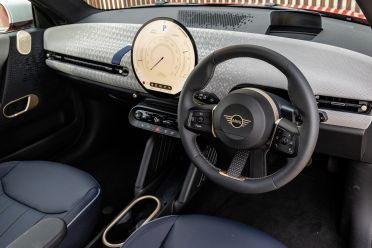
Cooper SE
So now there are two different cars for arguably different buyers. The petrol Cooper is an evolution of a long-running formula from the BMW Group with the latest and greatest tech and features it has to offer, while the Chinese-built electric model has a dedicated architecture with more performance and range than before to make it a proper EV.
We had a stint in both petrol and electric versions of the new Mini to see if it’s still fit to be one of Australia’s favourite premium compacts, and which of the powertrain types is the better bet.
How does the Mini 3D Hatch compare?
View a detailed breakdown of the Mini 3D Hatch against similarly sized vehicles.

Mini
3D Hatch
How much does the Mini Cooper cost?
The petrol and electric Mini Cooper each come with two powertrain options, though the ICE range has three distinct trim levels for each engine while the electric is one each.
| Model | Price before on-road costs |
|---|---|
| Cooper C | |
| 2025 Mini Cooper C Core | $41,990 |
| 2025 Mini Cooper C Classic | $44,990 |
| 2025 Mini Cooper C Favoured | $47,990 |
| Cooper S | |
| 2025 Mini Cooper S Classic | $49,990 |
| 2025 Mini Cooper S Favoured | $52,990 |
| 2025 Mini Cooper S JCW Sport | $54,990 |
| Cooper E | |
| 2025 Mini Cooper E Classic | $53,990 |
| Cooper SE | |
| 2025 Mini Cooper SE Favoured | $58,990 |
To see how the Mini Cooper lines up against the competition, check out our comparison tool.
What is the Mini Cooper like on the inside?
Like the larger Countryman, the new Cooper harks back to the über-simple original Mini of the ’50s and ’60s.
-
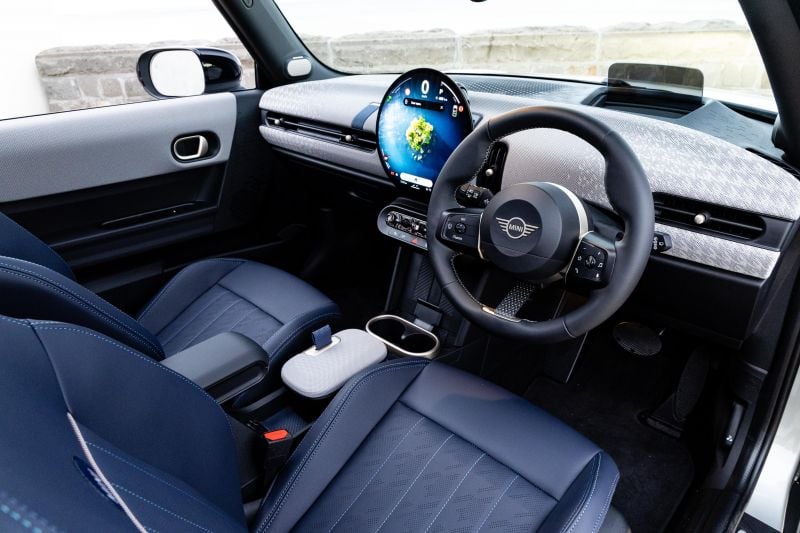
Cooper S
Gone are the instrument cluster and much of the old model’s physical switches and toggles, with the new round OLED touchscreen dominating the clean dashboard.
The steering wheel is almost cartoonish with its threaded lower spoke and fat rim, while the little pod of buttons below the central display retains the style and shape of before but is much more simplistic.
You may notice subtle changes between the ICE and EV versions too, with detail differences throughout. Keep in mind, they’re fundamentally different cars underneath.
Mini has liberally applied its new signature knitted trim across areas like the dashboard and doors, which somewhat makes up for the reduced ratio of soft-touch plastics throughout the cabin.
Yes, cabin quality and tactility have long been a hallmark of Mini products, really differentiating them as premium compact cars. At least the knitted bits are a nice alternative to boring, black plastic.
That said, I was disappointed to find hard plastics on sections of the door and dashboard which are a bit more conspicuous than they ought to be given how plush the previous generation was, but it’s still nicely finished and more exciting to look at compared to something like an Audi A1.
There are differences between the ICE and EV versions in the design of the centre console, with differing layouts for the cupholders and wireless phone chargers as well as placement of the cutesy Mini storage box.
Other distinguishing features include the shape and design of the dashboard and air vents, as well as the placement of the speaker grilles. Nothing is drastically different, but it’s worth noting between the two vehicles.
The 9.4-inch circular OLED display is really cool and has a really fun interface like the larger Countryman. It perhaps makes more sense in the Cooper than its larger stablemate, with the fun graphics, various layouts and modes well tailored to the Mini’s fun, urban and design-led pitch.
BMW’s latest Android-based operating system serves as a good basis for the new Mini interface, with excellent mapping, colourful and high-resolution graphics, and an array of connected services that look and feel markedly different to the parent company despite the shared architecture.
There’s even a cute personal assistant named Spike, a cartoonish dog that basically performs the same functions as the BMW Personal Assistant. Say “Hey, Mini” and he’ll pop up and prance around the screen, performing voice-activated functions with some unique Mini flavour.
As noted in my review of the Countryman, while the 3D mapping with augmented reality is pretty cool for a small car, having Apple CarPlay confined to a small box in this big, cool circular display seems half-arsed. It otherwise works fine, but it almost ruins the aesthetic.
I also found the screen-based climate controls a little fiddly to use especially if you try to change temperature on the move, but de-mister functions are physical controls below the display which are much better to use.
While there are four seats in the cabin, the Mini Cooper remains more of a 2+2 or a 3+1 depending on how tall the front occupants are.
I’m 6’1 and you’d be struggling to fit someone of my height behind me, and while access is made easier via the quick latches on the front seats it’s not the most graceful experience for someone of my size to get into the back of a Mini.
Once you’re back there though, the rear seats are finished in the same leather-free upholstery as the front and there are moulded armrests and storage cubbies for your odds and ends.
If you’re putting kids in the back, there are ISOFIX and top-tether anchors to keep their seats secure. If you want more space and easier access to the rear, best to wait for the Cooper 5-Door or the new Aceman EV crossover.
Mini quotes just 210 litres of cargo capacity for all Cooper variants with the rear seats in place, which is pretty tiny. You’ll get some small bags or boxes in there, but you might struggle to fit something bulkier like a pram.
Fold the second row (pretty flat, too), and you have 725 litres in the Cooper C and S, while the electric models quote 800 litres. There’s no spare wheel either, just a tyre repair kit across the range irrespective of fuel/power type.
| Dimensions | Mini Cooper S | Mini Cooper SE |
|---|---|---|
| Length | 3876mm | 3858mm |
| Width | 1744mm | 1756mm |
| Height | 1432mm | 1460mm |
| Wheelbase | 2495mm | 2526mm |
| Cargo capacity | 210-725 litres | 210-800 litres |
To see how the Mini Cooper lines up against the competition, check out our comparison tool.
What’s under the bonnet?
-

Cooper S
| Specifications | Mini Cooper S | Mini Cooper SE |
|---|---|---|
| Engine | 2.0L 4cyl turbo | Single-motor electric |
| Engine outputs | 150kW / 300Nm | – |
| Electric motor outputs | – | 160kW / 330Nm |
| Battery | – | 54kW lithium-ion |
| Transmission | 7-speed dual-clutch | Single-speed |
| Driven wheels | FWD | FWD |
| Weight | 1355kg | 1605kg |
| 0-100km/h (claimed) | 6.6 seconds | 6.7 seconds |
| Fuel economy (claimed) | 6.5L/100km | – |
| Electric driving range | – | Up to 402 kilometres |
| Fuel tank capacity | 44 litres | – |
| Fuel requirement | 95 RON | – |
| CO2 emissions | 147g/km | 0g/km |
| Max AC charging rate | – | 11kW |
| Max DC charging rate | – | 95kW |
| Charging time (80 per cent) | 5 hours 15 minutes (AC) 30 minutes (DC) |
To see how the Mini Cooper lines up against the competition, check out our comparison tool.
How does the Mini Cooper drive?
We sampled both the Cooper S and Cooper SE on a stormy Melbourne day out east.
-
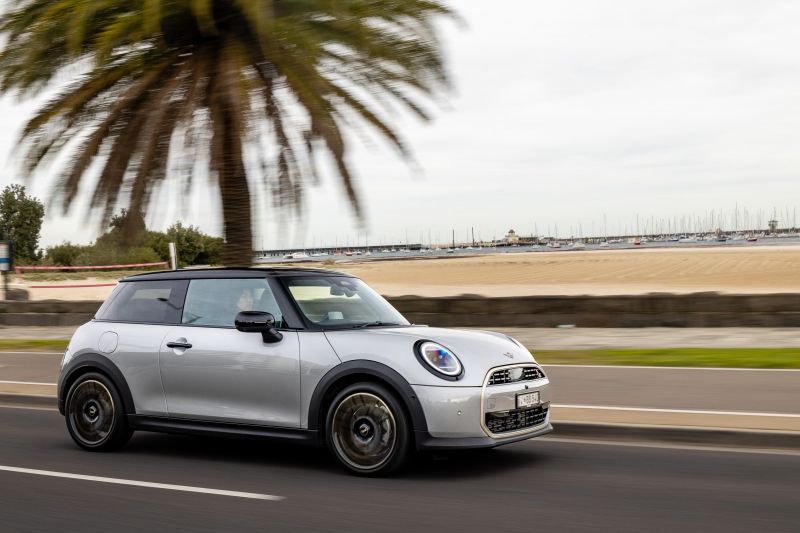
Cooper S
I started off in the Cooper S, which was tested in Favoured spec. One of the first things I noticed is there are no paddle shifters – you have to step up to the JCW Sport version to get these.
Our loop in the Cooper S started in Mulgrave and took us out to some of the winding roads further out east, giving us a good opportunity to see if the new Cooper still has that ‘go kart feel’. Spoiler alert: It’s still got it.
There’s a raspy bark from the 2.0-litre turbo four on the move, mimicking the note that I’ve experienced in the X1 xDrive20i with the same engine. With 300Nm on tap from just 1450rpm, this 1.3-tonne hatchback feels punchy and willing.
The revisions to the vehicle architecture also help it feel more hunkered down and substantial on the road. BMW and Mini’s seven-speed dual-clutch auto is among the best in the business for sharpness and smoothness, rapidly firing up and down ratios while also rarely exhibiting any quibbles in low-speed driving.
On the freeway stint the Cooper S felt very secure and sure footed in heavy rain in a way many hatchbacks this size don’t, and the enhanced suite of driver assists give it a very grown-up feel.
Not once did this little front-driver feel nervous or skittish with the amount of water on the road, and wasn’t upset by larger vehicles passing by in adjacent lanes. Remember, this thing is only 3876mm long and 1744mm wide.
Once we hit the twisties out of town, the Cooper S felt as tied down and fun to drive as it has ever been. Where previous versions were prone to understeering at the limit, the latest model felt more capable in the bends despite lacking a limited-slip differential in inclement weather.
That low, wide stance is also felt in these conditions, really giving a sense of strong grip levels. It’s just a shame the Favoured doesn’t offer you paddle shifters to take more control of the drivetrain in spirited driving.
-
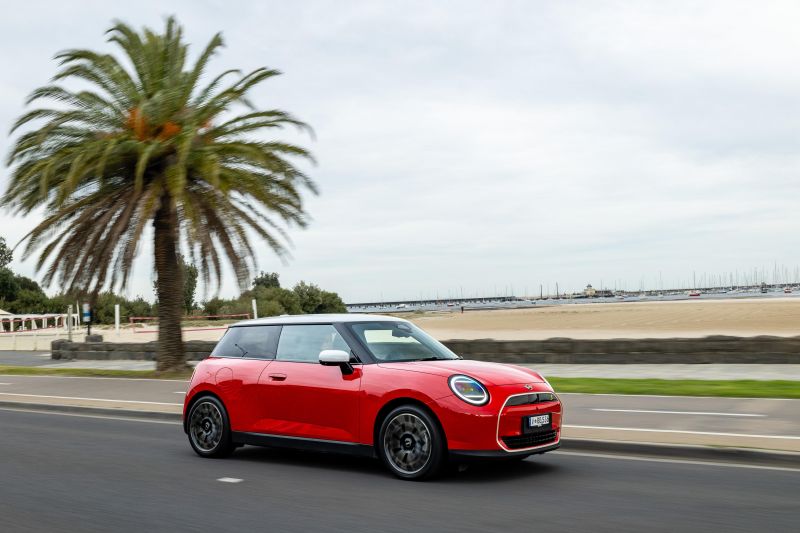
Cooper SE
Hopping into the Cooper SE shortly after my stint in the ICE-powered Cooper S, the added width and weight of the electric model is immediately noticeable – but not necessarily in a bad way.
With immediate response from the front-mounted electric motors and no planetary transmission to engage off the line, the electric Mini feels more responsive and punchier in real-world scenarios. You may be surprised to see that Mini’s 0-100km/h claim for the SE is actually 0.1s slower than the petrol model.
Despite this, I’d say the SE is quicker to 60km/h and maybe even 80km/h. It scrabbles off the line trying to get all 330Nm to the tarmac, and once moving the electric drivetrain really shifts the 1.6-tonne body with gusto.
Like BMW’s EV models, the Mini Cooper SE sends synthesised sounds into the cabin under acceleration to varying degrees depending on the drive mode chosen. In it’s most aggressive setting – accessed via the Mini Experience mode selected – it sounds like you’re launching a sci-fi spacehip.
The lower centre of gravity helps the 300kg-heavier electric Mini keep itself in check in the bends, and you don’t necessarily feel all of that extra weight unless you’re really pushing it mid-corner.
It really does still feel like a Mini, much like its predecessor that shoehorned the BMW i3’s electric bits underneath the tiny body. There’s probably a bit more wheelspin and an earlier grip limit than the petrol, but it’s still plenty of fun.
And to be honest, the Cooper E and SE are going to spend the bulk of their time zipping through city and suburban streets, and this is where the torquey electric drivetrain really trumps the petrol-powered version.
What you lack in raspy, mechanical soundtrack you make up for with immediacy and linearity of acceleration. It always feels raring to go, though if you’re too eager with your right foot you might struggle to match the brand’s 402km range claim.
Following our mixed drive loop – which covered 40-50 kilometres of freeway, suburban and highway settings – the Cooper SE was showing an energy consumption readout of 16.9kWh/100km.
That’s a little high for a vehicle of this size, and would see you achieve a bit over 300 kilometres between full charges. Mind you I was flicking through various modes including Go Kart.
Both powertrain variants have a taut ride which can hit a little fidgety over high frequency imperfections, but it’s well damped enough as to not feel crashy or unrefined. The heavy steering and big steering wheel in both ICE and EV models may be a little over the top for some, but I quite liked it.
I found the brakes in the Cooper SE required a little getting used to compared to the S as well, given the handoff between regen and mechanical brakes wasn’t quite as seamless as I would have liked – it stops well, though.
Speaking of the brakes, the Mini Electric’s regen braking isn’t quite full one-pedal driving but offers a couple of stages of intensity from nothing to reasonably bitey to suit your tastes. More adjustability via additional settings or paddle shifters would be welcome, though.
What do you get?
Cooper Core standard equipment:
- 240mm-diameter circular OLED infotainment touchscreen
- Wireless Apple CarPlay and Android Auto
- Wireless phone charger
- Ambient lighting
- Head-up display
- Cruise control
- 6-speaker 100W sound system
- Front sports seats
- Heated steering wheel
- Keyless entry and start
- Dual-zone climate control
- Cloth/vescin upholstery in Grey/Blue or Black/Blue
- 17-inch alloy wheels
- Automatic LED headlights
- Rain-sensing wipers
Cooper Classic adds:
- Interior camera
- Augmented reality satellite navigation
- Heated front seats
- Panoramic glass roof
- 18-inch alloy wheels
Cooper Favoured adds:
- 12-speaker 365W Harman/Kardon sound system
- John Cooper Works power-adjustable front seats with memory
- Sun protection glazing
- Anthracite headliner
- Vibrant Silver interior trim
- Vescin upholstery in Beige or Nightshade Blue
Cooper JCW Sport adds:
- John Cooper Works interior and exterior design package
- Adaptive suspension
- John Cooper Works Sport Brakes
- Sport stripes in Jet Black or Chilli Red
- Vescin/cord upholstery in black
Is the Mini Cooper safe?
The new Mini Cooper models have yet to be assessed by ANCAP or Euro NCAP.
Standard safety equipment includes:
- Autonomous emergency braking (forward and reverse)
- Blind-spot monitoring
- Driver fatigue detection
- Rear cross-traffic alert
- Front and rear parking sensors
- Reversing camera
The Driving Assistant Plus package (optional on the C, standard on all other Coopers) adds:
- Adaptive cruise control with stop/go
- Automatic speed limit assist
- Steering and Lane Control Assistant
- Surround-view camera with 3D view
- Parking Assistant Plus
How much does the Mini Cooper cost to run?
The Mini Cooper range is backed by a five-year, unlimited-kilometre warranty.
| Running costs | Mini Cooper C + S | Mini Cooper E + SE |
|---|---|---|
| Warranty | 5 years, unlimited kilometres | 5 years, unlimited kilometres (Vehicle) 8 years or 100,000 kilometres (HV Battery) |
| Roadside assistance | 3 years, unlimited kilometres | 8 years, unlimited kilometres |
| Service intervals | Condition-based servicing | Condition-based servicing |
| Capped price servicing | 5 years or 80,000 kilometres | 4 or 6 years, unlimited kilometres |
| Total capped price service cost | $2275 | $1202 (4 years) $1753 (6 years) |
To see how the Mini Cooper lines up against the competition, check out our comparison tool.
CarExpert’s Take on the Mini Cooper
Mini has done a very good job with its latest products.
-

Cooper SE
The petrol-powered Cooper models have made a similar jump in technology and refinement as BMW products based on the same platform, now offering properly high-end tech suites and grown-up driving characteristics more deserving of the premium price tag.
As for the electric Mini, its mixed heritage doesn’t mean a significantly different look or feel despite the dedicated EV architecture. It’s as cute and fun as the petrol Mini, though the lack of personalisation options at launch may take the fun out of the buying and ownership process – the company tells us this should change moving forward.
While prices align the petrol Cooper with larger hatchbacks and in some cases budget Chinese EVs, and the electric versions with even more popular electrified metal, the charming design and driving dynamics carve out a niche that isn’t really satisfied by something like an MG 4 or Tesla Model 3.
-
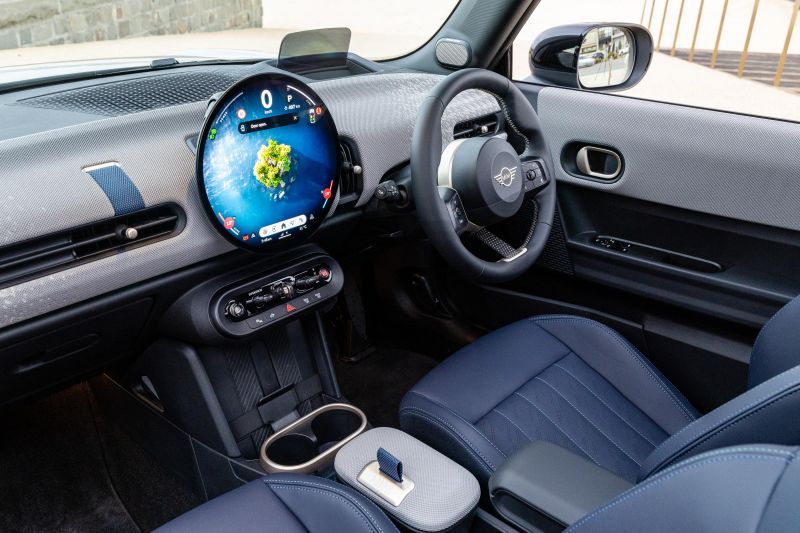
Cooper S
Picks of the range? I think the Cooper S Classic at $49,990 offers a lot of fun personalisation options and punchy performance for not too much spend, while the Cooper E at $53,990 offers warm hatch performance and good enough claimed range at 305 kilometres.
The SE is a heap of fun, but the high pricing and limited personalisation relative to the ICE models (there’s just one interior available) hamper its unique selling point against something like a Cupra Born or the super silly Abarth 500e. It’s also harder to recommend something that small for that kind of money when there are so many other better EVs out there.
But the modern Mini has never really been about taking on the mainstream. The brand and its products have always been left of field and quirky while leaning on the premium features of the BMW Group.
As more and more fun small cars go the way of the dodo in Australia though, it’s good to see that Mini hasn’t given up on cool, compact city hatchbacks and funky design.
Click the images for the full gallery
MORE: Buy a Mini Cooper
MORE: Everything Mini Cooper

